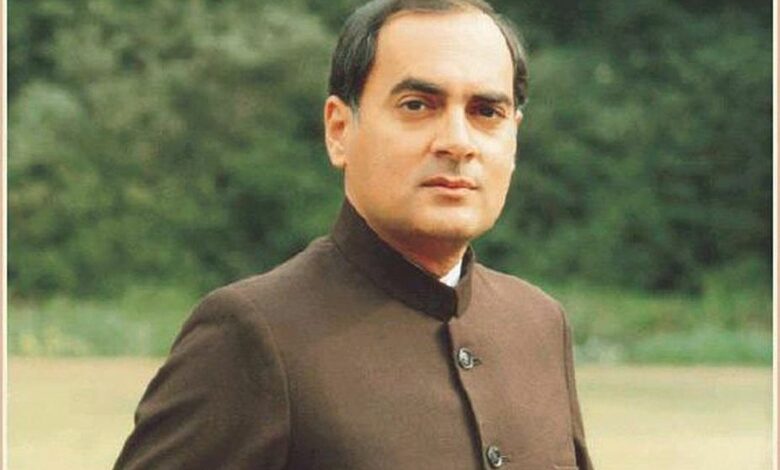Who are the people convicted in the Rajiv Gandhi assassination case? Where are they now?

The recent idea of taking the decision on pleas of the release of the convicts in the Rajiv Gandhi assassination case has brought the spotlight back on the convicts. The recent developments in the case have seen the authorities passing the buck to take a decision on these release pleas.
It was on January 22 when the central government told the Supreme Court that the call on convict AG Perarivalan’s release will be taken by the Governor of Tamil Nadu. After this, the developments were such that on January 25, the Tamil Nadu’s Governor’s office left to President Ram Nath Kovind’s office to take a poll on the pardon decision of all these convicts. The passing of the buck didn’t just end here. Last week, the Centre told the court that “the proposal received by the Central government will be processed in accordance with the law”.
Currently, there are seven convicts who were found guilty in the case and are serving life terms since then. The decision was taken in 1999 with the apex court sentencing four of them to death and the remaining three to life imprisonment. The death sentences Nalini and the other three sentences (including that of Perarivalan) were commuted to life in 2000 and 2014, respectively.
The trial court for TADA (Terrorist and Disruptive Activities (prevention) act) had sentenced as many as 26 people to death in the first go. However, the 1999 sitting of the Supreme Court upheld the conviction of only seven of the totals accused while releasing all the other people by observing that none of those convicted formed the nucleus of the assassination team of Rajiv Gandhi.
Let’s dig deeper into history by talking about what were the accusations levied on the seven convicts, and what they are doing now:
Accused No. 1: S Nalini
Nalini was the daughter of a nurse cum police officer in Chennai. She is now a 54-year-old graduate from a prominent college in Chennai.
One interesting thing about her case file was that she was the only one present in Sriperumbudur (the assassination spot) when Rajiv Gandhi was put to death out of all the seven convicts. Furthermore, we had photographs of Nalini and the alleged assassins.
Once the assassination was accused, Nalini and Murugan ( another accused) flee Chennai. They were in hiding for o month until their arrest. At the time of arrest, Nalini was pregnant and had given birth to a daughter who then raised inside the prison walls until age five. Later, the girl migrated to the UK with Murugan’s mother. she is a doctor now. According to Nalini’s counsel, she is suffering from severe trauma and acute depression.
The 1999 verdict of the Supreme Court observed that Nalini was an obedient participant. The court also acknowledged that there was no key evidence to prove that she was part of the conspiracy.
Her death sentence was commuted to life in 2000 following a plea by Sonia Gandhi, Rajiv’s wife.
Accused No. 2: Santhan
Santhan is a Sri Lankan citizen. His deep devotion to Hindu customs has made him being in charge of rituals at a temple inside Vellore Central Prison. He is out of touch with his family does not have an active legal team.
According to court documents, he fled then Sri Lanka in 1991 along with Sivarasan and arrived in India by boat. Sivarasan had led the assassination team and could never be caught alive by the authorities. The Supreme Court order accepts his direct and active role in the killing.
Accused No. 3: Murugan
Murugan was among Sri Lankan youth who fled the country all the way to reach India (Chennai) in the hopes to go abroad. The friendship between Nalini and Murugan evolved into a deeper relationship.
Accused No. 9: Robert Payas
Payas is another 55 year old Sri Lankan citizen who had come to India with his family in September 1990. His portfolio also shows certain links with the militant group LTTE.
Accused No. 10: Jayakumar
Jayakumar is the Brother-in-law of Payas. Both of them had reached India together. According to the prosecution, Jayakumar was seriously involved in the killing of Rajiv Gandhi. One of the reasons was also his close association with another accused Sivarasan. He had also faced atrocities during the IPKF action in Sri Lanka.
Accused No. 16: Ravichandran
Ravichandran was an Indian national. He is believed to be close to the Tamil Eelam movement (which happened in the 1980s) and has close links with LTTE leaders, just like Robert Payas, even before the group was actually officially formed.
In 1999, the Supreme Court struck down the conspiracy charges against Ravichandran along with the suspension of TADA provisions from the case.
The latest development in his case file was the 15 day granted parole early last month. Ravichandran was granted this parole by the Madras High Court on a petition filed by his mother.
Accused No. 18: Perarivalan
The first time Perarivalan was arrested in June 1991, he was only 19 years old on the accusation of having bought two battery cells for another accused- Sivarasan.
A decoded radio message sent by Sivarasan to LTTE leader Pottu Amman in Sri Lanka on May 7, 1991, acted as a piece of major evidence during the probe. The decoded message was as follows: “Our intention is not known to anybody except us three.”
The role of Perarivalan can be highlighted with the fact that at a time when the conspiracy charges against Nalini, Ravichandran, and many other people were dismissed by the apex court of India, his were not. The Supreme Court upheld the conspiracy charges against him because the Bench found it “believable” on account of his TADA confession statement taken by a CBI SP. However, the charges under TADA provisions were dismissed under the verdict issued by the court.
The most prominent consideration undertaken while sentencing Perarivalan’s sentence to death was his confession taken under TADA. After this, he remained on death row for as long as 23 years, until early 2014.
One thing to note here is that Perarivalan has always claimed innocence.




